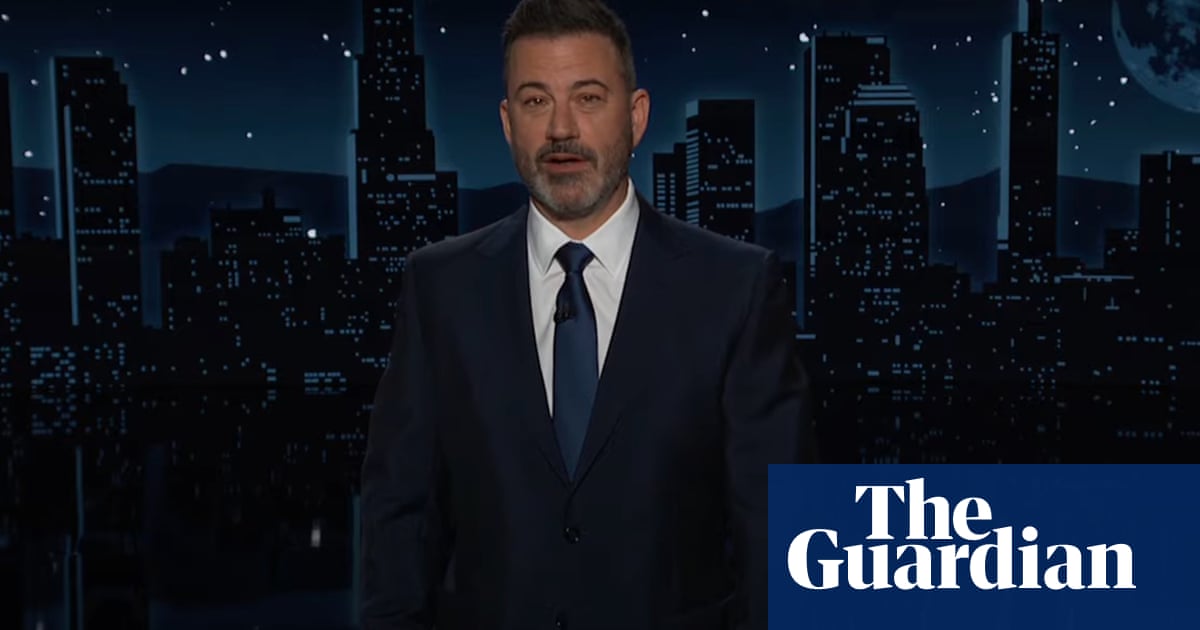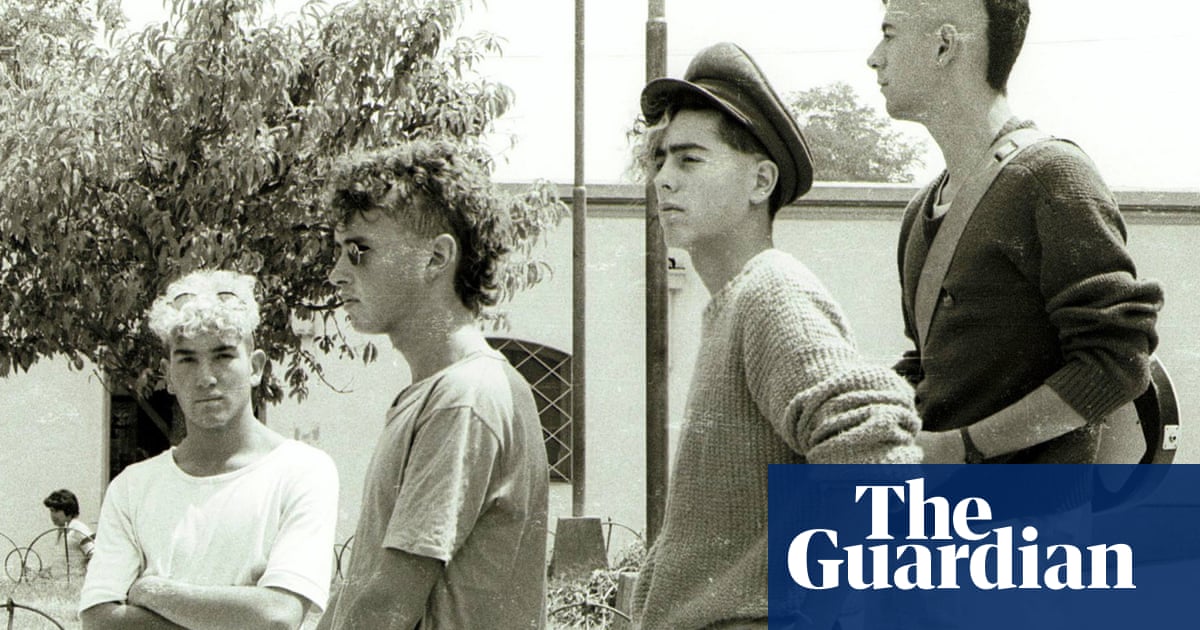
hese days, we think of the period between 1965 and 1967 as one of white-hot musical progress, a dizzying three-year period during which innovation followed innovation, a succession of totemic albums and singles were released and pop music changed irrevocably. But, as Jon Savage’s superb book 1966: The Year the Decade Exploded made clear, not everyone at the time was impressed with how things were going. Savage’s research revealed a succession of contemporary naysayers, devoted to “ringing the death knell” as he put it: 1966 – The Year Pop Went Flat was noted music journalist Maureen Cleave’s assessment of 12 months that had seen the release of Revolver, Blonde on Blonde, Reach Out (I’ll Be There), Eight Miles High, It’s a Man’s Man’s Man’s World and 19th Nervous Breakdown.
The most striking contemporary quote of all might be one that didn’t appear in Savage’s book. “People aren’t jiving in the listening boxes in record shops any more, like we did to a Cliff Richard ‘newie’,” it lamented, before qualifying: “I like some of the new sounds, purely as sound, that are coming out of pop music.”
It’s striking because the person who said it – who raised the spectre of Richard as an example of an innocence and excitement pop had supposedly lost – wasn’t a critic or commentator, or someone of the pre-Beatles generation left behind by pop’s relentless progress. It was the Who’s Pete Townshend, a man who’d done more than most to drag pop away from the world of jiving to a Cliff Richard “newie” and into the unknown.
No band of their era appeared to hit the ground running in quite the way the Who did. They did things no British band had done before: smashing their equipment on stage; strafing their singles with abstract bursts of feedback-laden improvisation; writing songs about topics pop had never touched; issuing aggressively confrontational edicts in their lyrics and interviews (“They’re really a new form of crime,” suggested their manager Kit Lambert to the Observer in 1966, “armed against the bourgeois”); applying to music the visual art practice Townshend learned at Ealing Art College; writing long episodic songs and dubbing them “mini-operas”.
The stuff about Richard, the pace pop was moving at, its future and what it had lost along the way, wasn’t a passing thought, but something preyed on Townshend’s mind in 1966 and 67. He was ambivalent about the latest development, psychedelia, on one hand enthralled by the Pink Floyd and their frontman Syd Barrett, on the other, mocking psychedelia’s “purple skies and LSD” lyrical excesses and protesting: “I’ve heard all I want to of the last Beatles’ LP.”
It was an equivocal line of thinking that underpinned The Who Sell Out, released in December 1967. It would act as a eulogy for Radio London, the pirate station whose support of their debut single, I Can’t Explain, had proved pivotal to its success, and whose passing as a result of the 1967 Marine Broadcasting (Offences) Act seemed symbolic of changing times, an era ending – the station’s old jingles blared out between songs. But it would also embody the forces changing pop. It was that most highfalutin of new ideas in 1967: a concept album. It featured at least two songs that anyone would consider psychedelic, opener Armenia City in the Sky and the extraordinary I Can See for Miles, on which the revelations afforded the acid initiate include the fact that his partner is cheating; and it concluded with another of Townshend’s mini-operas, Rael, which dealt with a baffling dystopian scenario in which China invaded Israel, touched on global overpopulation and economic superpowers, and was edited down from a piece that ran to “about 20 scenes”.
he Who Sell Out stirred another thorny topic into the mix: the relationship between pop and commerce. We tend to believe non-musical product endorsement is an invention of the modern pop era – a necessary financial counterpoint to declining sales in the age of illegal downloads and free streaming – but it was already rife in the 60s. At the height of their “would you let your sister go with a Stone?” notoriety, the Rolling Stones briefly broke off from being the stuff of middle England’s nightmares to record an advert for Rice Krispies; Cream hawked Falstaff Beer; the Yardbirds repurposed their single Over Under Sideways Down to sell instant milkshake mix; Diana Ross and the Supremes had their own line of sliced bread. A bootleg CD, released in the late 90s, reveals just how many 1960s artists recorded adverts for Coca-Cola: everyone from Marvin Gaye, Ray Charles and Aretha Franklin to the Troggs, the Bee Gees, and proto-metallers Vanilla Fudge.
It was a world into which the Who had plunged: they were the first band to record a British ad for Coke, shown in cinemas; they also worked with the same American milkshake company as the Yardbirds. Typically, Townshend was conflicted: having agreed to the work because the Who needed exposure in the US, he stormed out of the sessions, leaving it to the ever-game Keith Moon to sell Great Shakes.
But something about the experience evidently stuck with Townshend: the next big thing, he suggested to the NME in late 1967, would be “groups not afraid to make concessions and mock the whole process”. Faced with a deadline for the Who’s forthcoming album, he proposed that it should include both songs that contained what would now be called product placement – as in the case of Odorono, a saga of thwarted dreams that hinged on a brand of deodorant – and actual adverts.
As the era of the free festival dawned, the Who’s management were to be found attempting to sell space on the new album to various companies. When the companies demurred, the Who recorded adverts anyway: for baked beans, acne cream, fitness courses, a car dealership and a variety of products and services relevant to the life of a mid-60s musician, including guitar strings and London’s Speakeasy nightclub. The cover, meanwhile, featured four cartoonish photographs – the work of Roger Law, later to find fame as one half of the team behind Spitting Image – with advertising copy beneath them, provided by David Hackett, editor of Nova, the sharpest consumer magazine of its era: each member of the band was shilling a different product.
he results couldn’t have been further from prevalent trends – a hip album sleeve in late 1967 looked like the psychedelic overload of the Jimi Hendrix Experience’s Axis: Bold as Love, also the work of Law – but the Who had long been obsessed with pop art. “[It] seemed to understand popular culture more than the people in the music industry,” said Townshend. (Both his shirt covered in medals and military chevrons and the RAF roundel T-shirt sported by Moon’s T-shirt were inspired by Peter Blake artworks; the union jack coat worn by Townshend and Entwhistle echoed Jasper Johns’ flag paintings; the song I’m a Boy and album My Generation were publicised with adverts inspired by Roy Lichtenstein. Now, they had produced an album that, in its blurring of art and consumerism, felt like an Warhol Brillo Box sculpture or Campbell’s Soup Can silkscreen you could listen to.
Moreover, no album then said more about pop music at the time. It was a time when pop began being freighted with a far greater sense of import than it previously had – the moment the Times could call the release of Sgt Pepper “a decisive moment in the history of western civilisation” and the rise of the underground press meant rock stars started being earnestly asked for their views on politics or the future of humanity rather than the new Beatles single or what kind of girls they liked.
The Who Sell Out seemed to openly question whether pop music was worthy of this kind of attention. What if it was just a commercial commodity, packaged to sell, no different to baked beans or deodorant? What if pop songs weren’t deep philosophical tracts to be pored over, but closer to advertising jingles? And, ran one of the album’s subtexts, did it matter? Wasn’t it more fun if you viewed pop in the way it had previously been viewed: fast, faddish, youthful, disposable – the stuff of jiving in the listening boxes in record shops rather than highbrow critical examination? This being the Who, another of the album’s subtexts ran completely contrary to that idea. There was the aforementioned Rael, the overarching concept, the sense that everything had been put together with a certain knowing irony, the fact that the whole package was a fabulous work of pop art – its cover photos were equal parts Warhol and, with their outsized tubes of spot cream and deodorant sticks, Claes Oldenburg. Advertising or gallery-worthy art? Jingles or mini-operas? Or both?
The rock-as-important-high-art concept that proved most prevalent, and understandably so: in the age of Sgt Pepper, Procol Harum’s A Whiter Shade of Pale and the Moody Blues’ London Festival Orchestra-assisted Days of Future Passed, that was the way the wind was blowing. Less than 18 months after Sell Out, the Who would release Tommy, a full-scale rock opera freighted with big ideas that the band ultimately performed not in concert halls but opera houses. Its vast commercial success and the seriousness with which it was taken helped usher in the era of progressive rock.
It would take a more cynical age for The Who Sell Out’s equivocal exploration of commerce to become common. The Great Rock ‘n’ Roll Swindle, Malcolm McLaren’s spirited attempt to redraw the saga of the Sex Pistols as a purely financial exercise, clearly had The Who Sell Out in its DNA – the film came complete with a fake ad break, flogging punk fast food including Rotten Bars, Vicious Burgers and Anarkee-Ora – while Buzzcocks’ debut album Another Music in a Different Kitchen initially came in a plastic bag with the word PRODUCT bluntly printed on it, as if the album was another form of consumer goods.
ince punk, the ideas explored on The Who Sell Out have become a constant presence. Its influence is the thread that links Sigue Sigue Sputnik – who actually succeeded in selling a few adverts between tracks on their 1986 debut album Flaunt It – to U2, whose PopMart tour was launched with a press conference held in a supermarket and saw the band performing beneath a stage set that looked like a McDonald’s arch; to Arcade Fire, who came up with a corporate logo for every track on their Everything Now album, packaged it with a lyric sheet designed to look like an advert, and promoted it with an interminable campaign that claimed the band was in the employ of a giant corporation that sold ice-cream, soft drinks and energy bars. The conceptualising behind the PC Music collective was essentially Sell Out given a DayGlo 21st-century reboot: singles masquerading as soft drink commercials, artists posing next to giant Starbucks cups, songs that sounded like jingles, lyrics reappropriating advertising slogans.
Perhaps it’s proved so pervasive because we now live in a world that The Who Sell Out predicted. Only its title feels anachronistic: no one talks about “selling out” any more, because the kind of things that would once have been considered “selling out” – corporate sponsorship deals, selling your music for use in advertising – are standard music industry practice, almost everybody does them. The kind of lyrical product placement that Odorono imagined is now commonplace, particularly in hip-hop. Videos can be transformed into exercises in branding – Justin Bieber’s video for What Do You Mean? heavily featured Calvin Klein underwear, a company with whom the singer had a “marketing relationship”; the video for DJ Khaled’s 2018 single No Brainer featured plugs for six products, from vape pens to champagne; a Fiat-sponsored video by dance act Faithless was broadcast in full during a Channel 4 ad break; streaming services are packed with playlists “curated” by companies from KFC to Victoria’s Secret. The Who’s tours now take in venues called things like the Ruoff Home Mortgage Music Center and the Air Canada Centre.
As for The Who Sell Out itself – now back out in a five-CD, two 7-inch super-deluxe format that adds another layer of satire – its reputation has waxed and waned. In the Who pantheon, it’s overshadowed by the career-defining triple whammy – Tommy, Live at Leeds and Who’s Next – that followed. Townshend has displayed a tendency to talk it down as “a ragbag of an album” and “a great idea that needed more time”. Fifty-four years on, it certainly sounds eclectic – it leaps from to Entwistle’s macabre kids’ song Silas Stingy to Tattoo’s troubled exploration of masculine insecurity; from the lysergic vistas of Armenia City in the Sky to Mary Anne With the Shaky Hand, a song about wanking. But the contradictory impulses about pop’s progress and possibilities at its heart make The Who Sell Out sound like a perfect snapshot of music at a moment of flux: poised between pop and the more serious business of rock, between pirate radio and prog. Meanwhile, what it has to say about music and advertising seems eerily prescient and thoroughly modern: a blast from the past that foretells the future.












